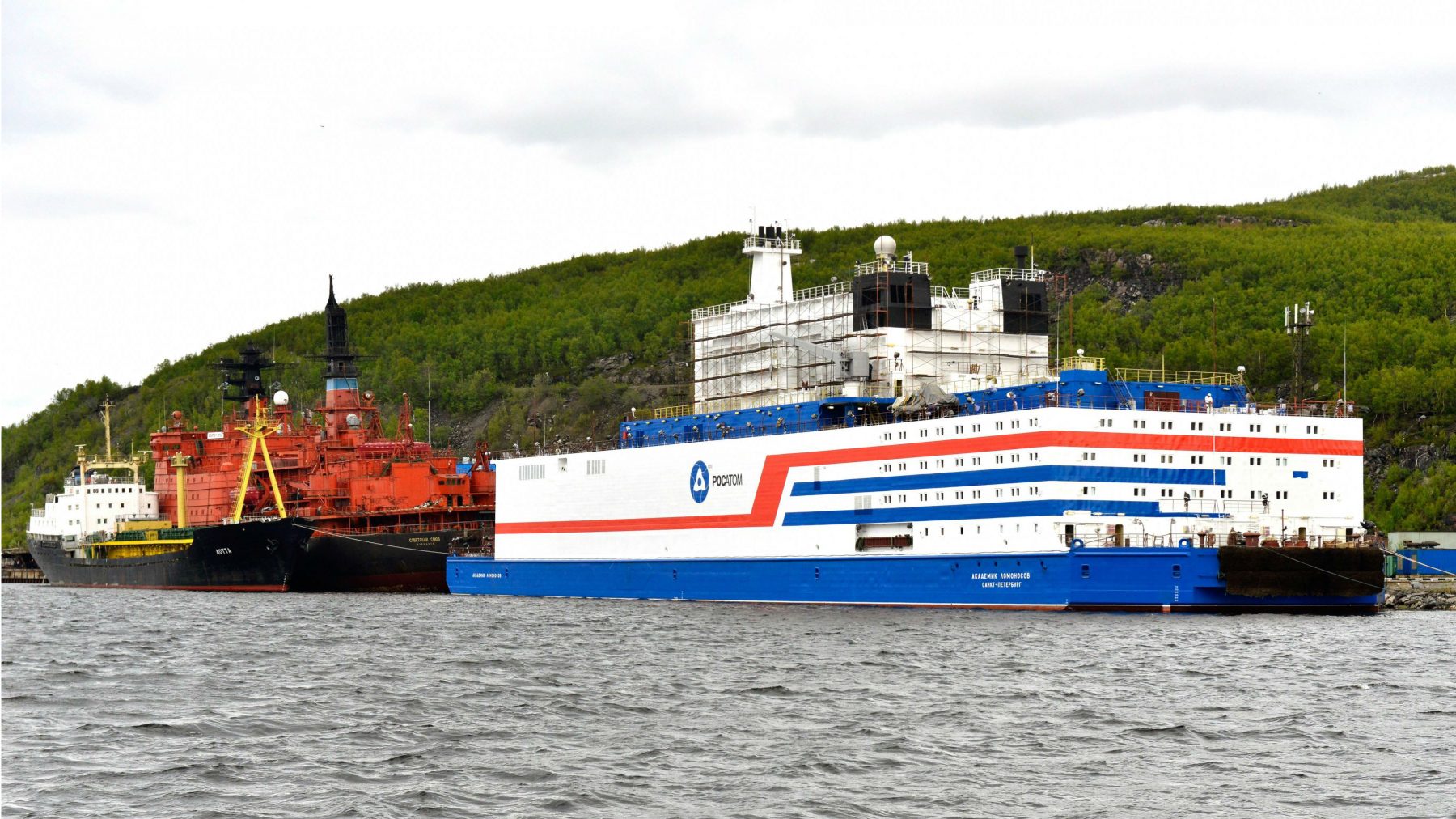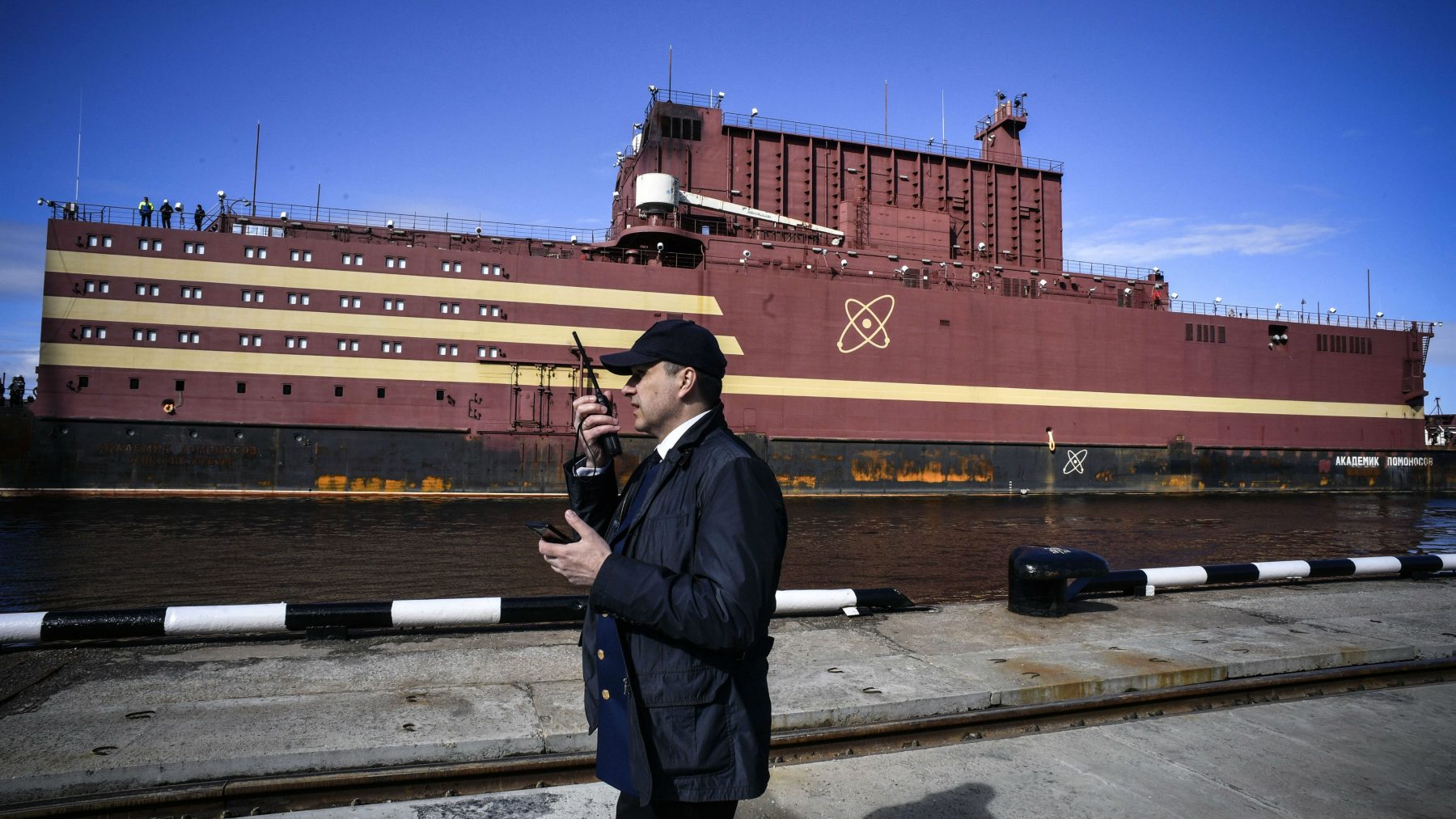Russia’s floating nuclear power plant gathers worldwide attention as it prepares to be towed in Arctic waters

Russia’s controversial nuclear barge is ready to travel through the Arctic seas — and observers across the globe are watching.
Greenpeace has called it a “floating Chornobyl.”
But the Akademik Lomonosov, which will dock in the Eastern Siberian town of Pevek, also provides a small glimpse into Russia’s northern ambitions and the role of nuclear power in achieving them.
Russia’s atomic energy agency, the Rosatom State Atomiс Energy Corporation (ROSATOM), has said in news releases that the future floating nuclear power plant will be a key piece of infrastructure as it develops its Arctic shipping route.
Meanwhile, the agency has started work on a fleet of nuclear-powered icebreakers to keep that route open. Its latest three ships can cut through three metres of ice, and each can produce 350 megawatts of power.
Rebecca Pincus, an assistant professor with the U.S. Naval War College, says Russia’s vision for itself as a global superpower in the 21st century hinges on the far North.
“Russia’s grand strategy for the century is centred on developing Arctic resources,” Pincus said. “That economic engine [is] … integral to Russia relaunching its place in the world.”
According to statements by ROSATOM, the plant will supply the 50,000-person Chukotka region with power and it will support “key industries” in this oil-and-gas rich region.
‘It’s a classical Russian solution’
The choice to build a floating nuclear power station is “a fabulous little encapsulation of all the challenges Russia faces in developing its Arctic zone,” Pincus said. “Floating a nuclear power plant to a tiny little city in the Russian Arctic is colossally challenging, colossally expensive … it’s a classical Russian solution.”

U.S. nuclear science professor Michael Golay is less intrigued by Russia’s play.
Golay’s team at the Massachusetts Institute of Technology has been working for years on its own floating nuclear power project — and Golay believes ROSATOM’s project will be dwarfed by his colleagues’ plans.
“From the size and what I know of it … it uses some of the ideas that ours makes use of, but not in nearly as thorough a way,” Golay says, noting that the Akademik Lomonsov is using similar nuclear reactors to those on existing icebreakers and submarines.
Putting nuclear power on the water has a long history. The former USSR’s first nuclear-powered icebreaker ship, the Lenin, was launched in 1957. The US military fired up the first floating nuclear power station, called the MH-1A, 10 years later. It was dismantled early this year.
What Golay wants to see is floating power plants that are much bigger: the size of midsize nuclear power plants on land. His team wants to use the cold water of the ocean to prevent overheating, which he says poses the greatest threat to a nuclear accident.
“If it’s operated well, we think there are good reasons to believe that a floating reactor can be at least as safe as what we have on land … and could be substantially safer.”
Golay worries the hype around the Akademik Lomonosov will stoke fear in North Americans about nuclear power: “You get outfits like Greenpeace getting people all upset about the whole idea.”
Jan Haverkamp, a nuclear energy expert with Greenpeace, says his organization is right to be worried. The Lomonosov will be docking in one of the most remote places in the world.

“It’s a lot more difficult to counter a catastrophe there than anywhere else on the globe,” he said.
Haverkamp is also concerned about the power being used to extract fossil fuels.
“Climate change is a given.… Opening up new fossil projects at the moment, when the world needs to be fossil-free in 2050, does not seem to make very much sense.”
Meanwhile, ROSATOM says this barge is only a small piece of a new future for floating nuclear power. It’s building a second generation of the floating nuclear units, and it’s in talks with several countries looking to buy nuclear barges of their own.
Emails to ROSATOM’s media contact were not returned before publication.
The barge will start getting towed to Pevek in August.
Related stories from around the North:
Canada: Community in northern Quebec to make the jump from diesel to hydroelectricity, CBC News
Finland: Nuclear waste company plans major investment at disposal site in southwest Finland, Yle News
Russia: Floating nuclear power plant bringing economic revival to Arctic Russian town, The Independent Barents Observer
Sweden: Environmentalists praise ruling on nuclear waste site in Sweden, Radio Sweden



